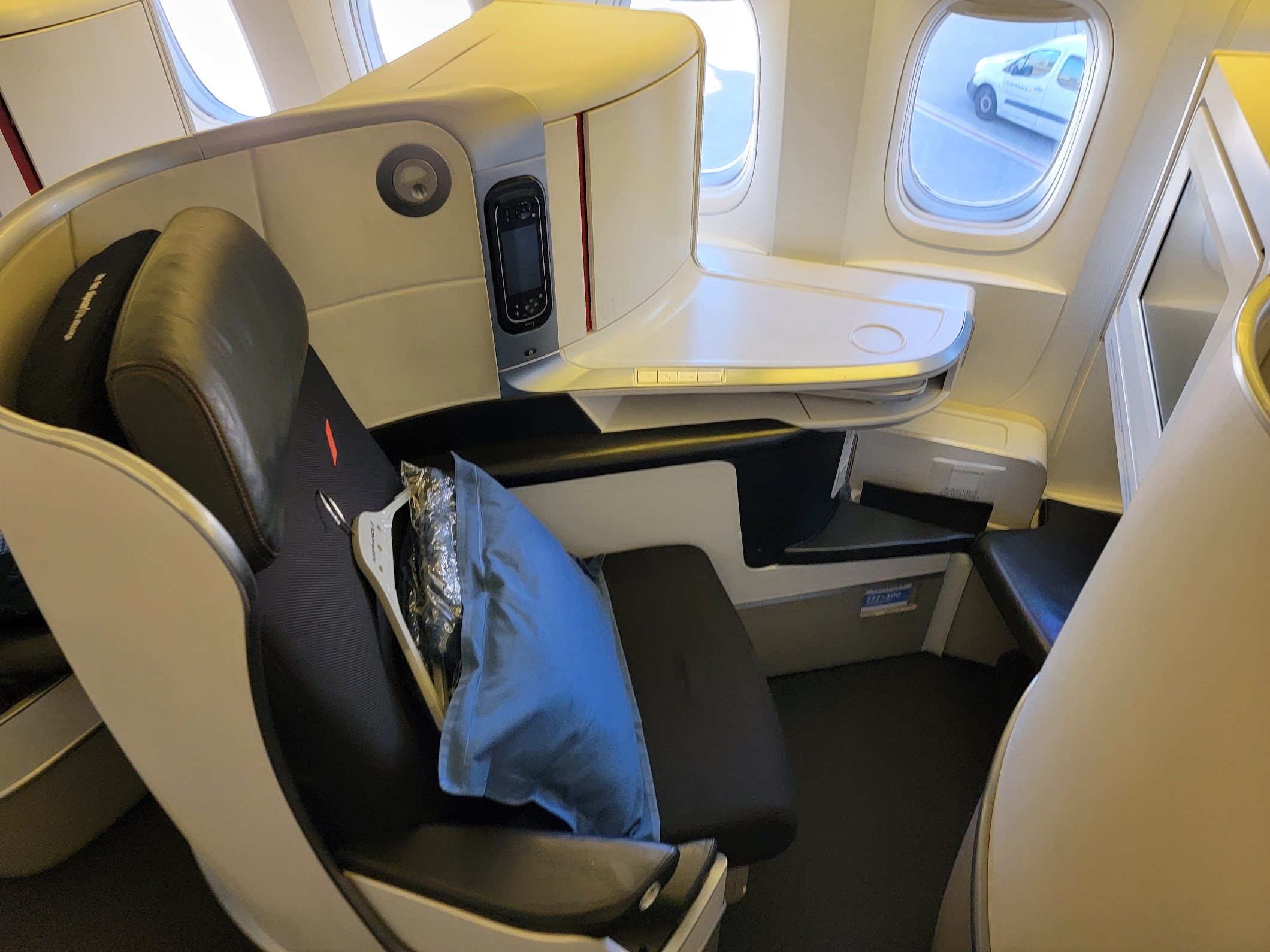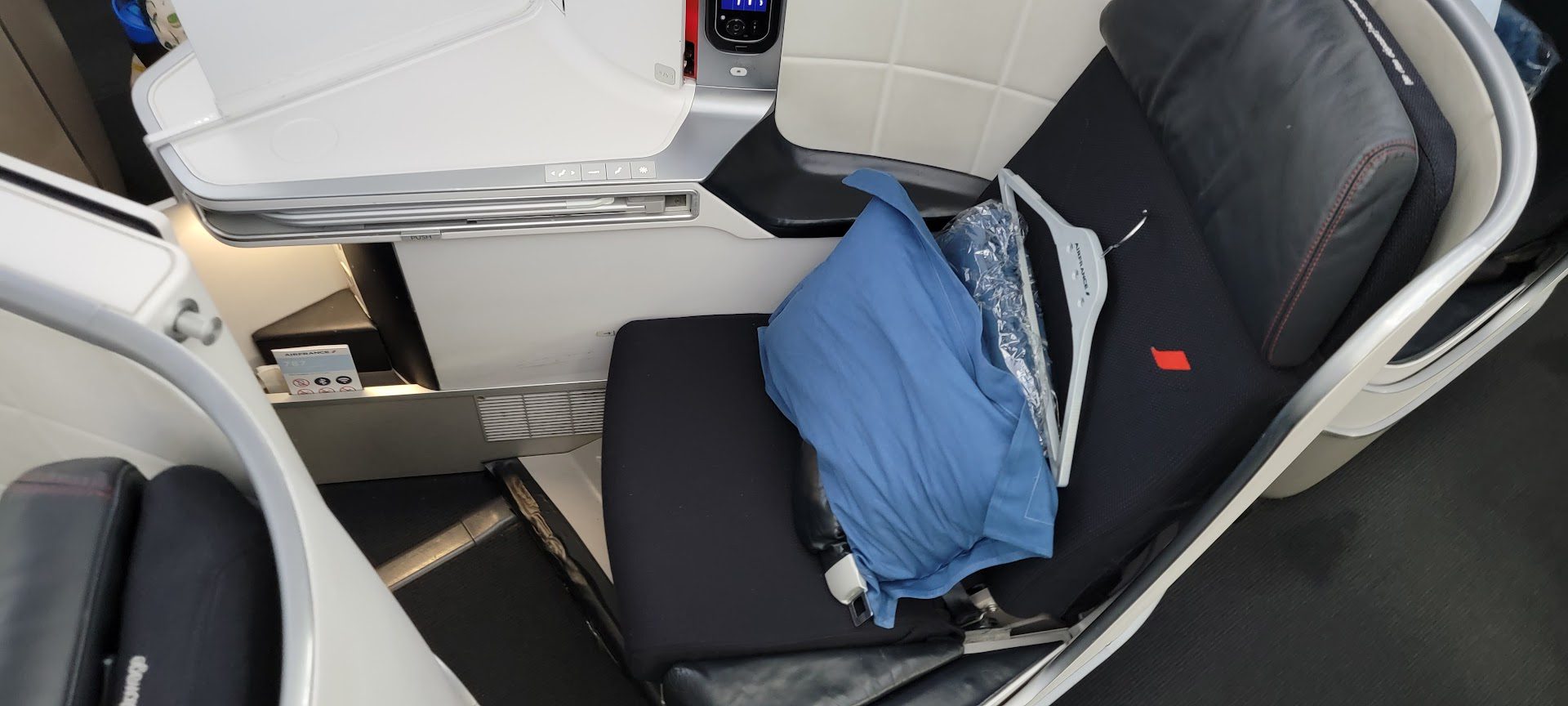[ad_1]
Air France KLM’s Flying Blue was already the best loyalty program in SkyTeam (although some partisans might argue for Korean Air Skypass) and has made several improvements over the past couple of years – better expiration rules, the addition of free stopovers, lower redemption prices. They seem to be one of the few rewards programs to have re-discovered that better programs are more profitable programs.
- In the fall they reduced business class awards between the U.S. and Europe to 50,000 points. (Their re-introduced award chart still says 55,000.)
- And they run frequent transfer bonuses with their partners. On the first I transferred 120,000 Bilt points into 300,000 Flying Blue points using a 150% transfer bonus.

Ben Lipsey, who runs the program, explains the why in a recent interview. He’s offered before, counterintuitively, that it’s actually the U.S. market that is driving program improvements. I think they already have a better program than key European rivals. It’s not competition from rivals like British Airways or Lufthansa that’s driving improvements. Instead, they’re chasing revenue growth from Americans.
- Credit card revenue drives U.S. frequent flyer program profitability. The same isn’t true in Europe. That’s because card interchange (swipe fees) are limited in Europe. (It doesn’t make sense for banks to spend a lot to incentivize transactions where those transactions aren’t as profitable.)
- Air France KLM partners with all of the big transfer currencies in the U.S., and that gives them a piece of U.S. card revenue.
- They want to be an attractive points transfer partner to secure more of that revenue.
Lipsey explains that, in essence, it’s Point.me that drove them to lower redemption rates. When customers compare award options at point.me he wants Flying Blue to offer the best deal, so that they get the points transfer.
So of course, Amex rewards is the biggest but there’s also Chase, there’s Citi, you know, Capital One. We, of course, have a partnership with Bilt. So the logic is roughly the same. You can transfer it to Flying Blue and then you can redeem. And, you know, a lot of the challenge that national to the US and international program has is we’re not always top of mind. So we also look at some of our partners. Like Point.me, for example, which acts as a kind of Google Flights or an OTA for redemption. That allows us to very easily compare the availability and pricing of reward tickets. And then it tells them kind of where to transfer my points to and how do I book.
And for us, you know, when we can, they’ll remain profitable and offer attractive reward inventory and options to our customers. In the US in particular, for us it’s a really, you know, good source of value that I think that we offer and one which will actually lead us to, you know, having over 50 percent of our award tickets being issued point of sale US. As of about mid next year, which is a really interesting statistic, I think, for a foreign, foreign loyalty program.
By mid-2024 over half of Flying Blue award tickets will be issued in the U.S.. Wow.

In some sense, Air France KLM is turning conventional wisdom on its head. We usually assume that credit cards are generating more points, there are a fixed number of seats, and that increased demand drives up redemption prices. And that may even be true for U.S. frequent flyer programs. But the option to spend those points on foreign programs drives those programs to become more attractive for U.S. consumers.
And the democratization of information, making more consumers aware of these better options, is key for this to happen. Blogs and tools like point.me that educate consumers break up the mindshare monopoly that U.S. airlines have over points transfers.
But previously, I mean, you had to kind of be quite you know, well versed in kind of the loyalty, you know, sphere to kind of understand that, okay, I can transfer my, you know, US based credit card points to a, you know, Colombian based frequent flyer program to redeem on a German airline between, you know, like you’d have to kind of understand these things to know that this was a, this was an attractive way to redeem your points, but people, it’s not always top of mind.
You know, if you look at to name any names, but to say, okay, if Delta, for example, being the biggest partner of Amex in the US and of course, it’s a partner. It stands to reason that, you know, I would think a large majority of people transfer their Amex MR points to Delta. Well, what, you know, I’d like them to also to know is that we also offer a good value.
And that, you know, Flying Blue is an attractive, what transfer as well. And that’s where tools like point.me come in because it democratizes this and it allows them, to allows customers to kind of see firsthand. Hey, you know, there’s other options for me to to redeem my points. You know, going via another airline, another carrier that I might not have thought of at first.
Air Canada has done a really good job. It’s my former employer, but I’m also, you know, very happy to see a lot of what they’ve done. I think the team there is fantastic. And I think they, you know, you’ve seen, they’ve added a lot of airline partners. That’s a strategy and you know, one where we’re also looking to grow as well. But when you do that, it means that, okay, so we’re Air France, KLM, them Air Canada. If I’m sitting in, you know. somewhere in the US or the UK or Australia. And I have dozens of partners that I can transfer my points to.
Delta gets the lion’s share of Amex transfers. United gets the lion’s share of Chase transfers. No other program is even close. But clearly Air France KLM is getting a material amount of transfers as a partner of American Express, Chase, Citibank, Capital One and Bilt. Bilt, by the way, Lipsey says “my favorite loyalty program at the moment is Bilt.” And he calls out the outsized role that Air Canada Aeroplan plays in the U.S. because of the quality of its program.
At investor day the group’s CEO said they “are just now starting to dial up our Flying Blue,” and that it is “the key unique tool that we have that the others do not have.” Lipsey offers several initiatives in the pipeline:
- Reciprocal elite benefits with Etihad
- Subscription product for purchase of miles and benefits
- Sustainability redemption options
- More benefits for Platinum and Ultimate elite members
What Lipsey understands and articulates in this interview, and that many other loyalty programs seem to have forgotten in their drive to offering more seats at average low value, is that aspirational rewards are what drive irrational loyalty on the part of consumers. He gives the example of redeeming miles for business class to Japan. It’s chasing the possibility of outsized value in travel that a consumer couldn’t otherwise access that keeps them loyal, keeps them spending, and choosing a brand even on a given trip where it may not be the best value.
Still, what’s most striking to me is that while many loyalty programs don’t like their redemption options compared with others, Flying Blue sees this as an advantage – point.me and similar services empower consumers and let them compare, so the program with the best availability at the best price wins their business and this is a great advantage for a brand that isn’t already top of mind for consumers. And this is driving down prices, rather than credit card rewards ubiquity increasing prices. Great stuff.
More From View from the Wing
[ad_2]
Source link
